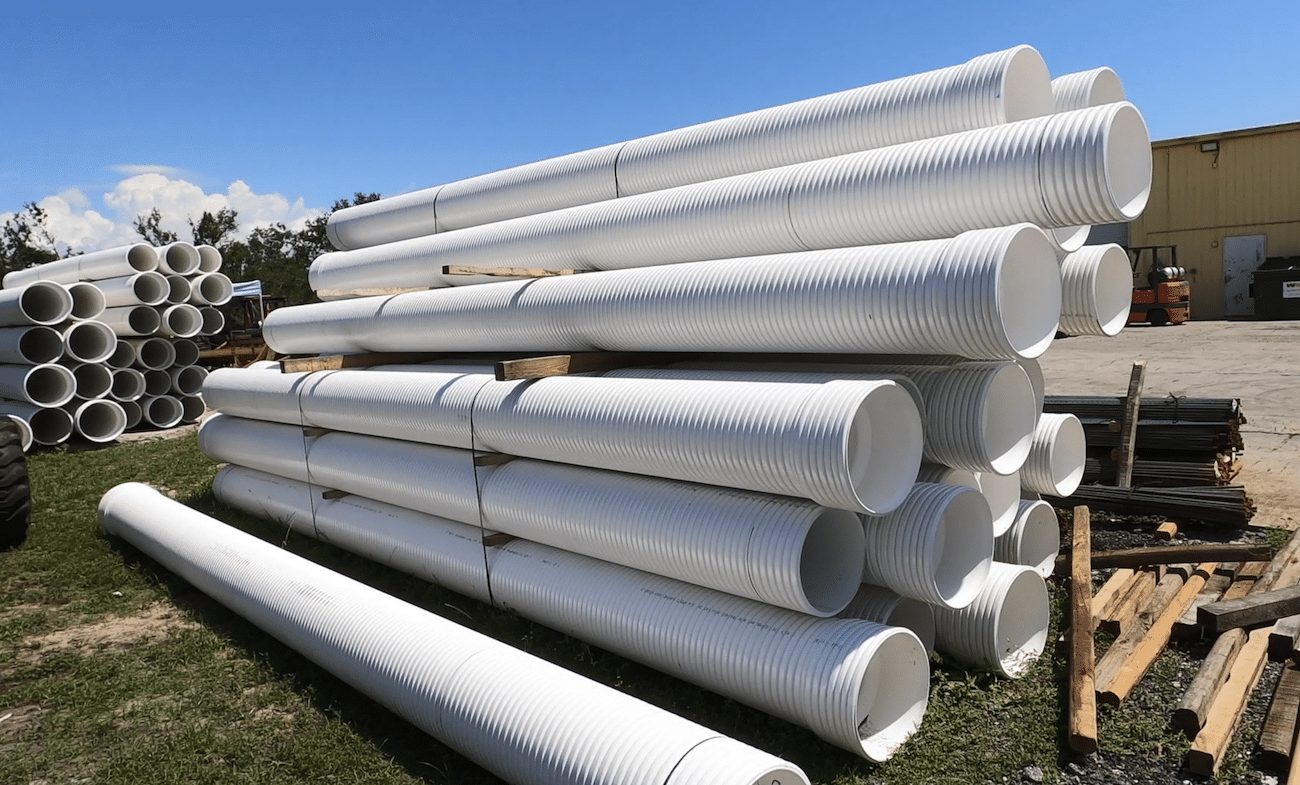Vital Role of Culvert Pipe in Florida
Florida’s unique geography, with its low-lying coastal regions and frequent heavy rainfall, makes it particularly susceptible to flooding and water runoff issues. To combat these challenges, property owners and local communities have turned to a vital infrastructure solution: culverts. Culverts play a crucial role in controlling runoff water from properties, protecting the environment, and ensuring the safety and stability of Florida’s communities. In this article, we’ll explore the importance of culverts in Florida and how they help manage runoff water effectively.
The Florida Runoff Challenge
Florida’s climate is characterized by a combination of high temperatures, intense sunlight, and frequent thunderstorms, which can lead to substantial rainfall in short periods. These climatic conditions pose significant challenges for managing water runoff. When rainwater can’t be absorbed into the ground fast enough, it flows across surfaces, picking up contaminants like oil, pesticides, and sediment along the way, and eventually causes flooding. This runoff can damage properties, harm ecosystems, and pollute water bodies.
Importance of Culvert Pipe
Culverts are engineered structures designed to channel and manage the flow of water. They play a pivotal role in addressing Florida’s runoff challenges in several ways:
- Prevent Flooding: One of the primary purposes of culvert pipe is to prevent flooding by controlling the flow of runoff water. Culverts redirect water away from vulnerable areas, ensuring that it is channeled safely into appropriate drainage systems or bodies of water, such as rivers, lakes, or the ocean.
- Erosion Control: Culverts help control soil erosion, a significant concern in Florida due to its sandy soils and heavy rains. By directing runoff water through a culvert, erosion is minimized, preserving the stability of the land.
- Water Quality Improvement: Runoff water can carry pollutants, including chemicals, debris, and sediments, into natural water bodies. Culverts help filter and trap these pollutants, improving water quality and protecting Florida’s sensitive ecosystems.
- Protection of Infrastructure: Culverts safeguard infrastructure such as roads, bridges, and buildings by managing water flow. Uncontrolled runoff can undermine foundations and cause structural damage, making culverts essential for infrastructure longevity.
- Wildlife Habitat Preservation: Florida is home to a rich diversity of wildlife, including various species of fish, amphibians, and birds. Culverts provide safe passages for these animals, allowing them to migrate and access essential habitats without the risk of being swept away by fast-moving runoff.
Types of Culverts
Culverts come in various shapes and materials, each designed to suit specific environmental conditions and project requirements. Common types of culverts used in Florida include:
- Culvert Pipe: These are cylindrical pipes made of materials like concrete, corrugated metal, or plastic. Pipe culverts are versatile and can be used in various settings, from small drainage ditches to larger waterways.
- Box Culverts: Box culverts have a rectangular or square shape and are often used for larger water flow channels, such as under roads and highways. They are durable and can support heavy loads.
- Arch Culverts: Arch culverts are semi-circular or elliptical in shape and are frequently used in situations where aesthetics and flow control are both important, such as in parks or residential areas.
- Open Bottom Culverts: These culverts have an open bottom and are often used in areas where fish migration is a concern, as they allow for unobstructed passage.
Controlling Runoff Water from Your Property
Property owners in Florida have a role to play in managing runoff water effectively. Here are some steps you can take to control runoff on your property:
- Culvert Pipe: If your property is prone to runoff issues, consider installing culverts to direct water away from vulnerable areas. Consult with a professional to determine the appropriate size and type of culvert pipe for your needs.
- Implement Rain Gardens: Rain gardens are designed to capture and absorb runoff water. Plant native vegetation in these areas to help filter pollutants and reduce the volume of runoff.
- Use Permeable Surfaces: Replace impermeable surfaces like asphalt and concrete with permeable alternatives such as permeable pavers or gravel. These surfaces allow water to seep into the ground rather than running off.
- Install Gutters and Downspouts: Properly maintained gutters and downspouts can direct rainwater away from the foundation of your home and into a designated drainage area.
- Create Swales: Swales are shallow, grassy channels designed to slow down and divert runoff. They help prevent erosion and filter pollutants from the water.
- Maintain Vegetation: Planting trees and shrubs on your property can help absorb excess water, reduce erosion, and provide wildlife habitat.
- Regular Maintenance: Keep your culverts, gutters, and other drainage features clean and free of debris to ensure they function effectively during heavy rainfall.
Culverts are vital components of Florida’s infrastructure, playing a pivotal role in managing runoff water and preventing flooding, erosion, and pollution. As property owners, it is essential to recognize the importance of culverts and take steps to control runoff on your property to protect both your investment and the environment. By working together with communities and professionals, we can mitigate the challenges posed by Florida’s unique climate and ensure a more resilient and sustainable future for the Sunshine State.
We have culvert pipe in stock and can order additional sizes and quantities for your upcoming projects. Stop by this week and see how we can help you complete your next project on time and under budget.
Come in to Chenango Supply in Punta Gorda today. We are Southwest Florida‘s largest Mahindra and ROXOR dealer. Are you familiar with the ultimate UTV?






